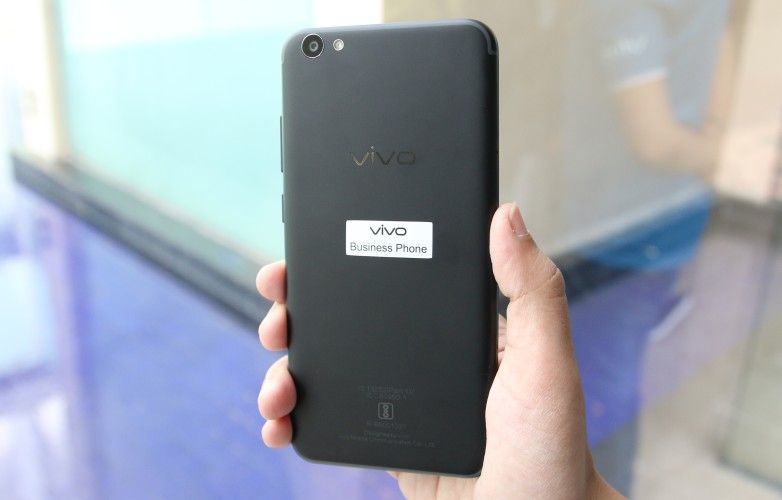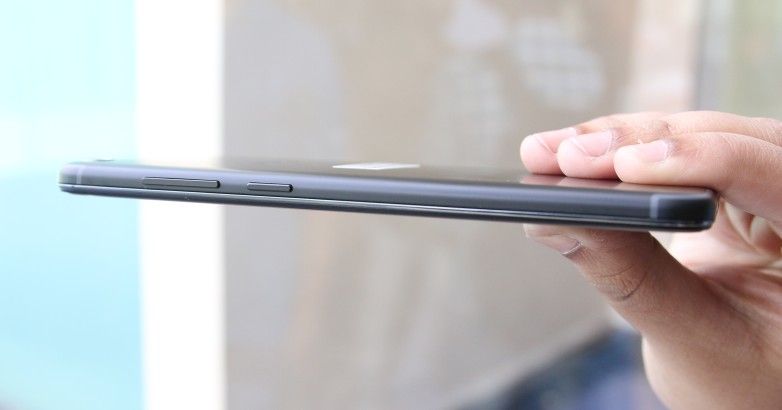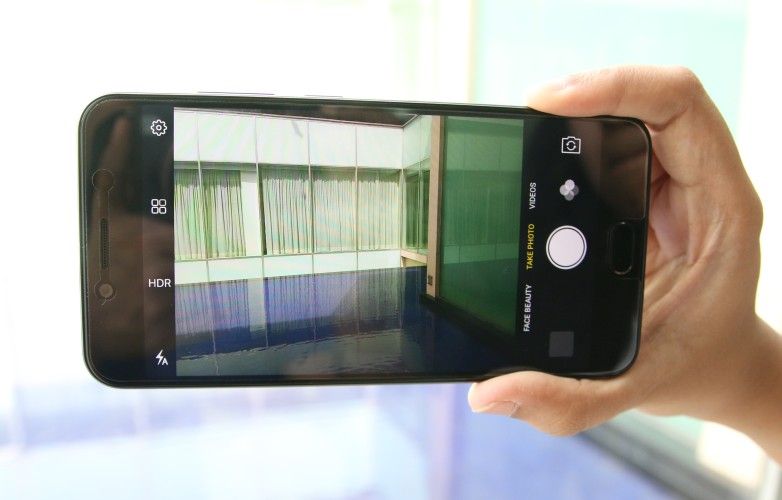
Chinese smartphone makers such as Vivo, Gionee, Oppo, and Huawei seem to be convinced that all Indians consumers care about in their smartphones is their ability to snap perfect selfies. There seems to be a method to this madness since notable examples such as Vivo have been making a killing in the offline smartphone markets, especially when most Chinese smartphone makers initially entered the Indian market by playing the specifications game. That is, offering the best hardware at throwaway prices, which is a great recipe for success in the geeky, hardware conscious online markets. However smartphones in the Vivo V5 series have made their mark through the offline markets by enticing laymen with the lure of perfect selfies, even when the rest of the hardware specifications may seem inferior. The Vivo V5s is another addition to the V5 series that employs the same strategy.
Priced at Rs 18,990, it might seem absurd that it packs in MediaTek MT6570 SoC, when competitors such as Xiaomi offer Snapdragon chipsets for much lower. However, the main appeal of the Vivo V5s is built around the 20-megapixel front camera, which is equipped with an LED flash. All of this has been packaged within the Moonlight Selfie marketing blitz that is more than enough to convince a layman to empty his or her pockets. I managed to get my hands on a demo unit at the phone’s launch in Delhi. What follows is a brief hands-on impression of the Vivo V5s.

Vivo V5s: Design and Build Quality
This variant of the Vivo V5 is strikingly similar to the Vivo V5 Plus that was launched earlier this year. Like the V5 Plus, the V5s has a premium design characterised with curved edges, great screen-to-body ratio (73 percent approx), and a thinner, sleeker frame that’s reminiscent of the iPhone 7 design language. The phone has a metal unibody design, but it still seems quite light and small in size despite its 5.5-inch footprint of the IPS LCD screen. Like the V5, the Vivo V5s carries the same U-shaped antenna band design. The screen is protected by Gorilla Glass protection, with the glass being 2.5D, which is marketing speak for glass that’s curved around the edges.
On a whole, the phone felt great to hold thanks to the rounded edges and didn’t seem too slippery like most other metal unibody designs. The build quality seems decent at first glance, but the presence of a pair of screws at the bottom is unbecoming of a phone costing as much. The capacitive home button doubles up as a fingerprint scanner, and it’s flanked by Android function keys on either side. Overall, nothing much has changed in terms of design from the Vivo V5 Plus.

Vivo V5s: Camera
The main attraction of the Vivo V5s is its 20-megapixel Moonlight selfie camera. Although, I didn’t get a lot of time with the phone, the few self-portraits that my colleague Afrin snapped appeared decent enough; at least, on the screen. The skin tones seemed fairly even and natural and the image appeared fairly sharp and devoid of the smoothening in the default mode sans any beautification filters. I must interject here that there’s no way to tell camera quality until you take enough snaps and pore over them on a colour calibrated PC monitor, but both the 20-megapixel front and the 13-megapixel rear cameras seemed to focus and snap images quickly and with decent results on the screen.
The camera UI is quite similar to the last version of the FunTouch UI, which in turn borrows heavily from the iOS camera app. You have all sorts of filters and options for beautification in the selfie mode; in addition to HDR, resolution enhancing Ultra HD, time lapse, slow motion, night, and professional modes. Video recording works from 480p to 1080p.

Vivo V5s: Hardware
Hardware wise, the Vivo V5s won’t wow any Xiaomi fans, who are generally used to being showered with great hardware at throwaway prices. Unlike the V5 Plus, the Vivo V5s has 5.5-inch display that’s hobbled with 720p resolution, which brings the pixel density down to 267ppi. This is a disappointment considering the price of the phone. The hardware specs too are similar to that of the Vivo V5, which includes the 1.5GHz octa-core 64-bit MediaTek MT6750 processor complemented by Mali-T860 MP2 GPU and 4GB LPDDR3 of RAM.
The only difference over the V5 is the extra 32GB of storage, taking the total internal storage to 64GB, which can be expanded to 256GB with the microSD card slot. While the SoC seemed to handle the bare demo unit without any lag or stutter in the few minutes I tried it out, don’t expect it to outperform the Snapdragon-equipped phones from Xiaomi that sell for much cheaper. The 3000mAh battery should be alright considering the 720p screen, but I’ll reserve my opinion pending a thorough battery test.

Vivo V5s: Software
Vivo is still stuck on Android 6.0 Marshmallow with the V5s, as the phone won’t ship with Nougat out-of-the-box. However, the phone does get the newer iOS-inspired FunTouch OS 3.0 software. Such complicated Android forks are also some of the reasons why it’s hard for such phones to get latest Android versions such as Nougat on time. The UI is classic Vivo, with the pull-down notification bar and heavily inspired customisable Control Centre (with essential shortcuts and access to settings menu) that can be brought up by swiping upwards.
Most aspects of the UI down to the icons will be familiar to existing Vivo smartphone users. The phone didn’t seem to have a lot of bloatware and came pre-installed apps such as Facebook, WhatsApp, UC Browser, Amazon, Saavn, and the Vivo V-Appstore — all of which seem fairly useful and most users would download them anyway.

Vivo V5s: First Impression
The Vivo V5s combines the looks of the V5 Plus with the modest specifications of the plain vanilla V5, while incorporating the same 20-megapixel Moonlight selfie camera and the AK4376 Hi-Fi Audio chip. The company touts it as the Camera and Music phone, but the main difference between the Vivo V5 and the V5s is the additional 32GB of storage that takes the total internal storage to 64GB. That’s not bad considering this is supposed to be marketed as a Camera and Music phone after all. However, we are waiting to get our hands on the review unit to see how it fares against the Oppo F1s and Gionee A1, which sport similar feature list and pricing.



















